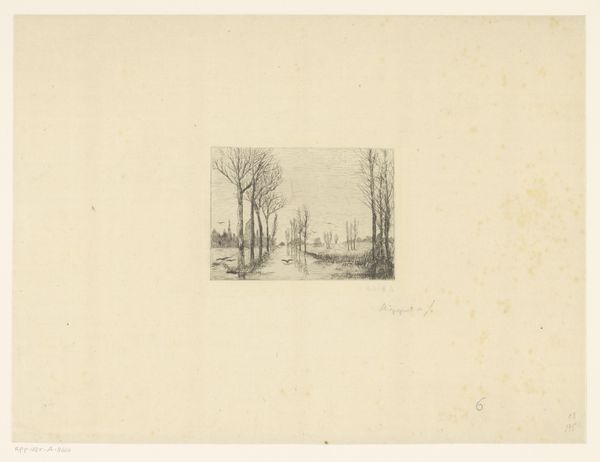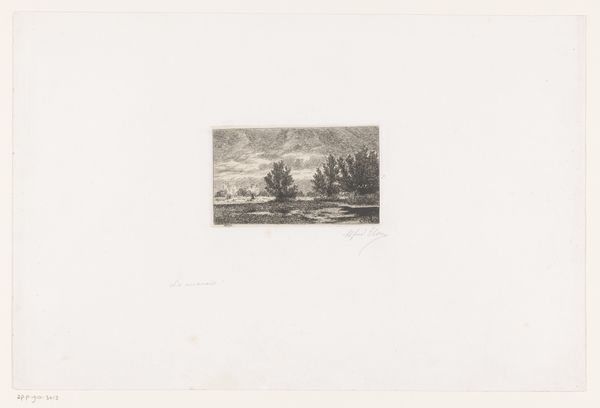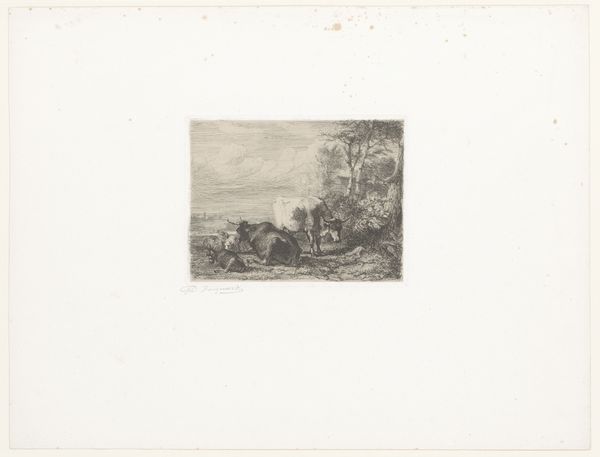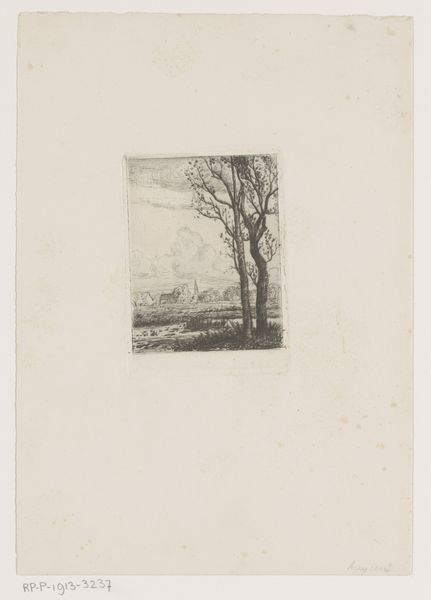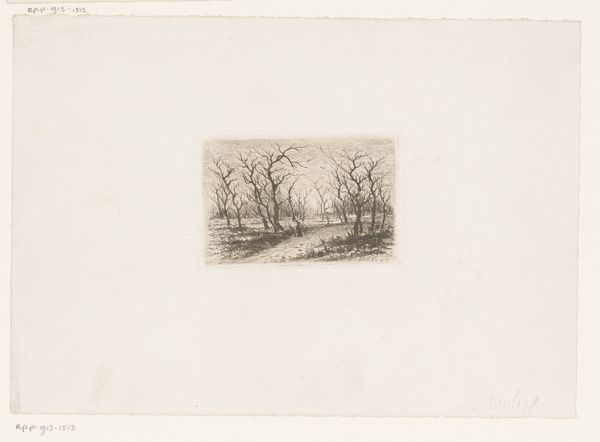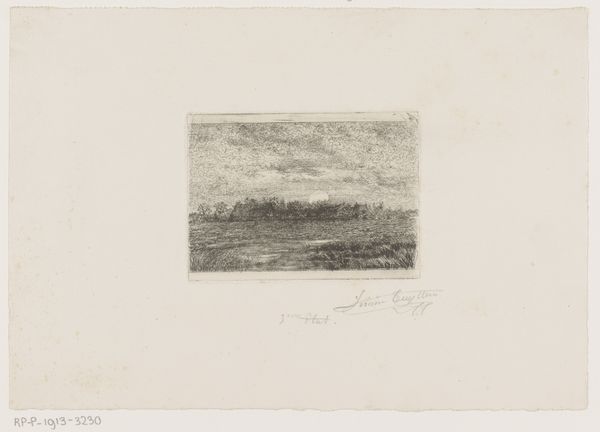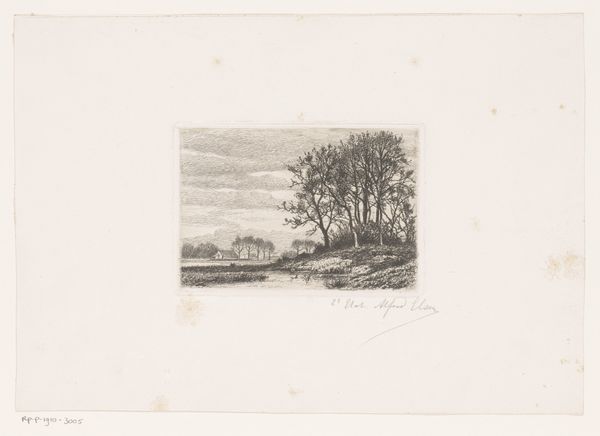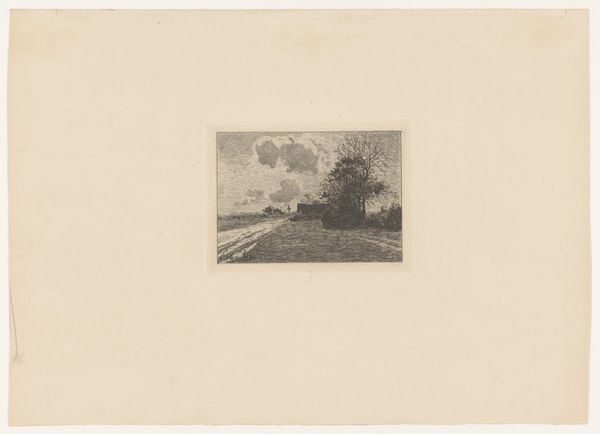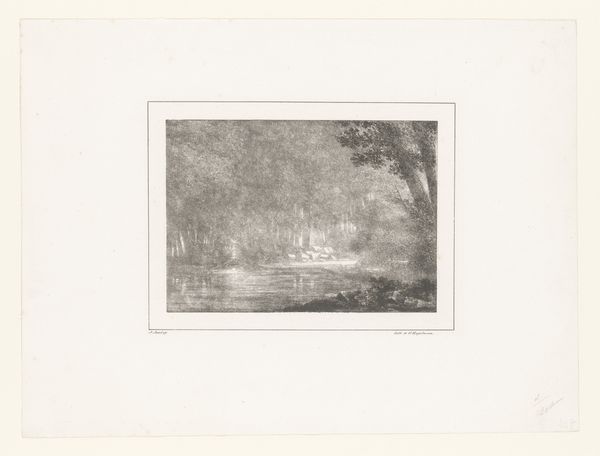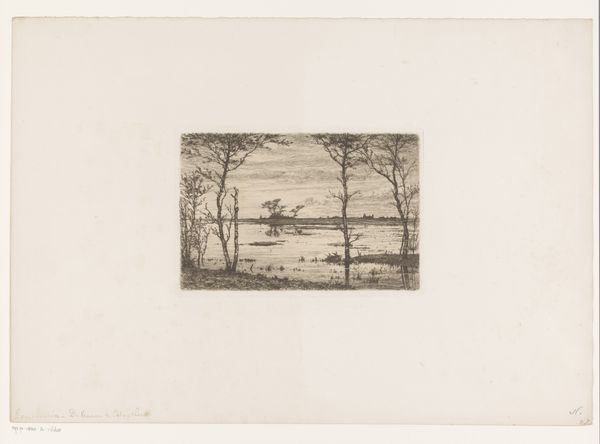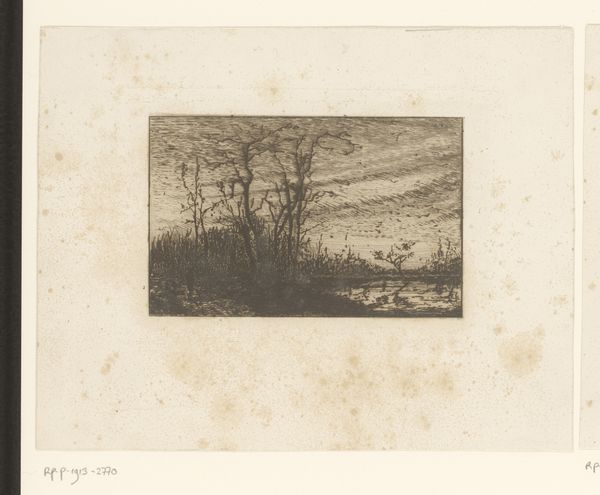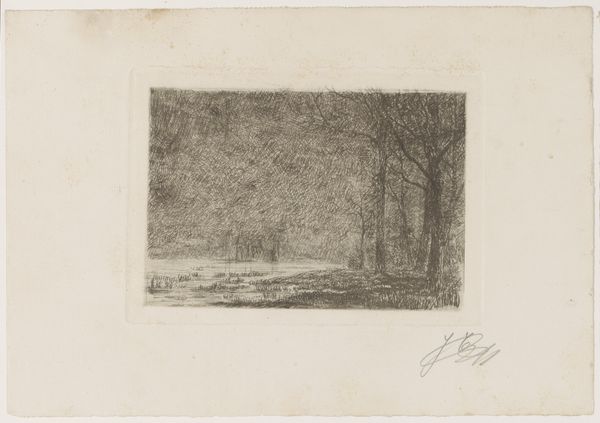
print, etching, plein-air
#
dutch-golden-age
# print
#
etching
#
plein-air
#
landscape
#
realism
Dimensions: height 104 mm, width 236 mm
Copyright: Rijks Museum: Open Domain
Emile de Baré etched this landscape, a road by a lake leading to a village, sometime between 1855 and 1902. The windmill in the distance is a poignant symbol. It speaks to a tradition of industry and community, but also hints at the relentless march of time. Consider how the windmill, initially a symbol of human ingenuity and prosperity, appears in later Romantic paintings as a ruin, a relic of a bygone era. Similarly, the solitary tree, a recurring motif throughout art history, stands here as a silent witness. Its branches, reaching towards the sky, evoke a sense of longing, a connection to something beyond our grasp. This image touches on something deep within us. It is a reminder of the transient nature of existence, the endless cycle of growth, decay, and renewal. The symbols within this landscape are not merely decorative, they are alive, pulsing with the weight of history and the echoes of our shared human experience.
Comments
No comments
Be the first to comment and join the conversation on the ultimate creative platform.
